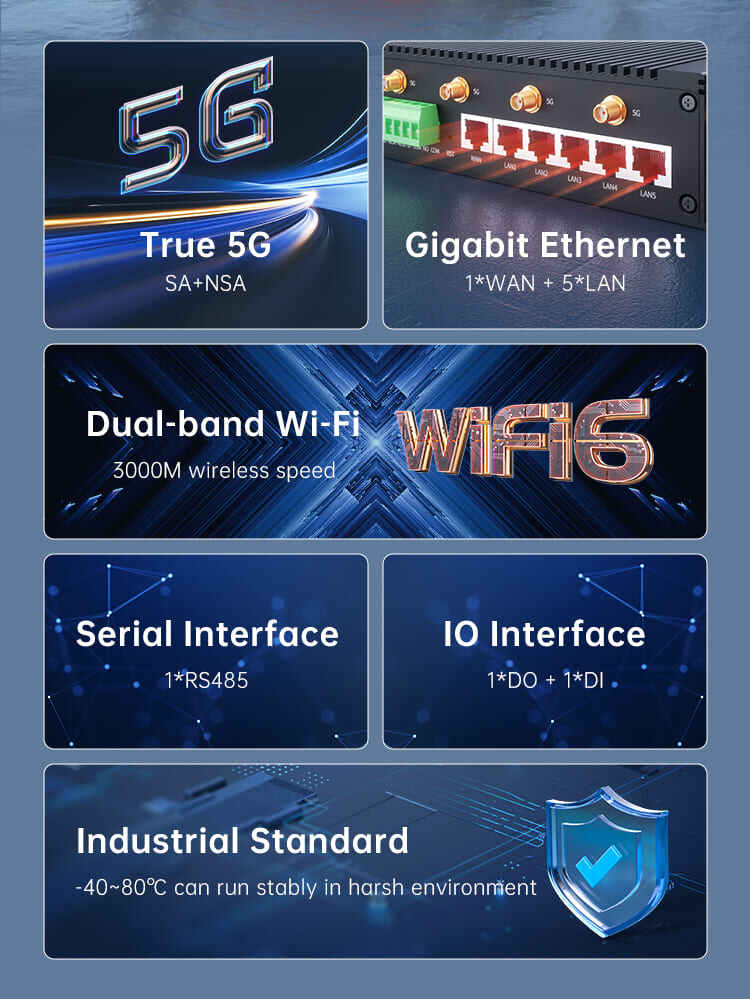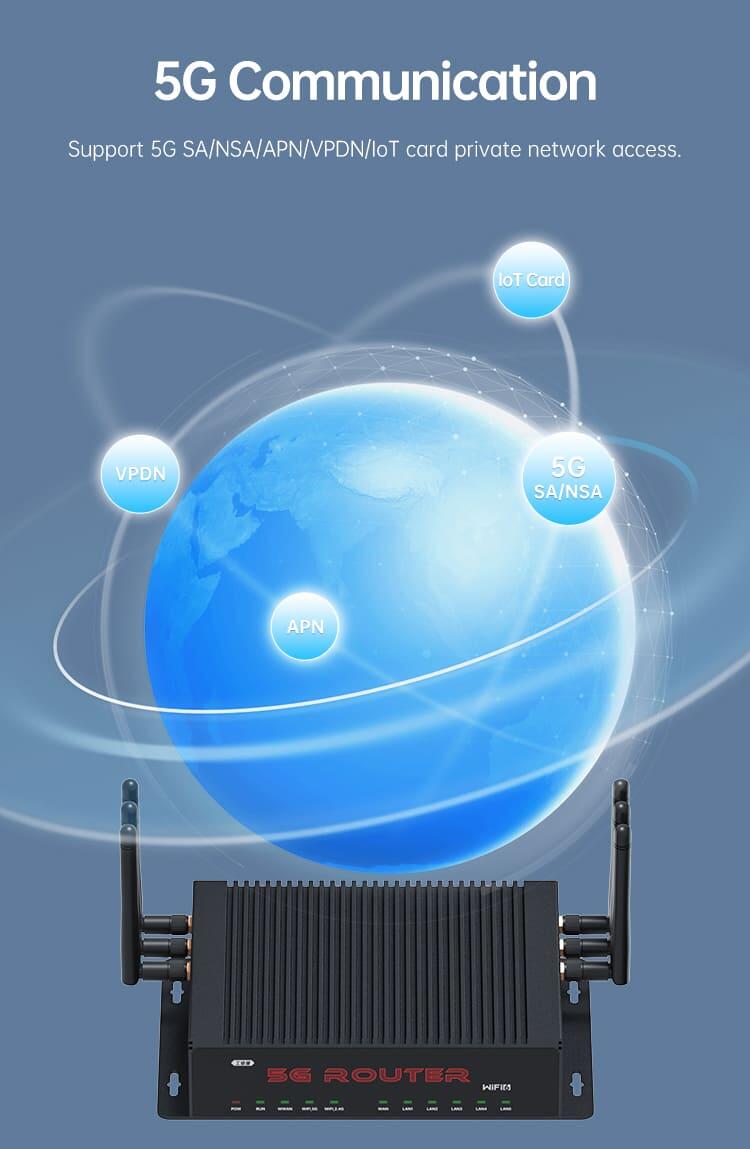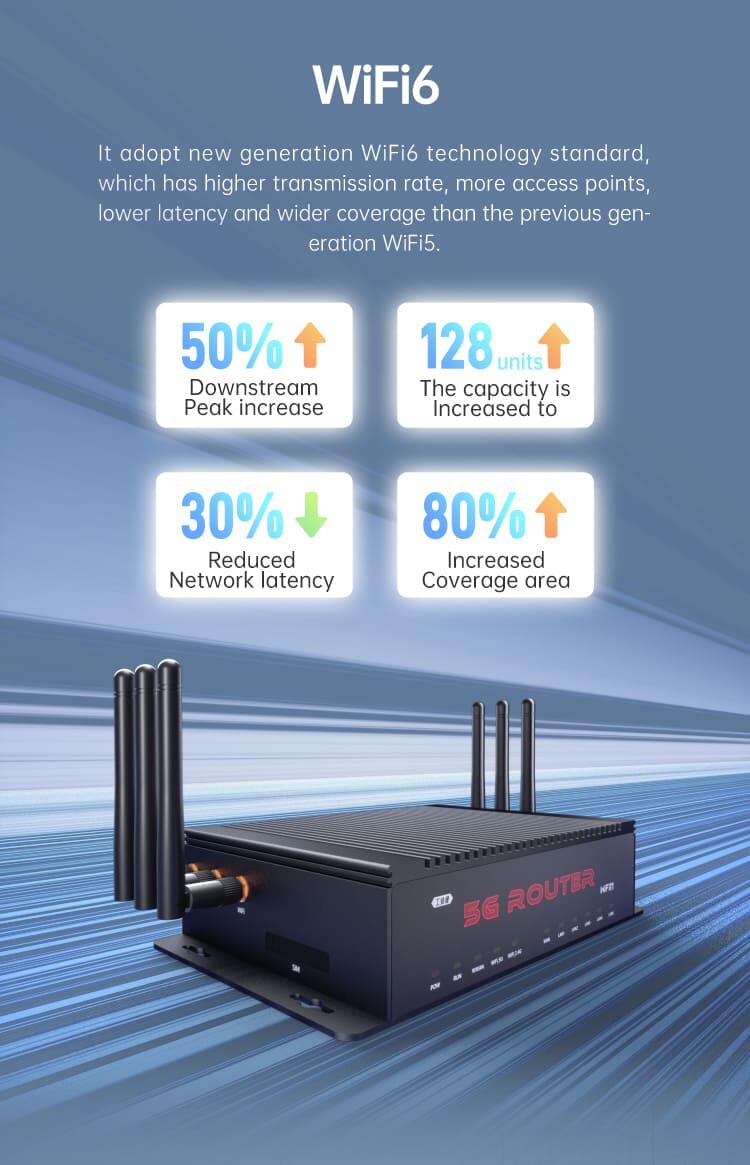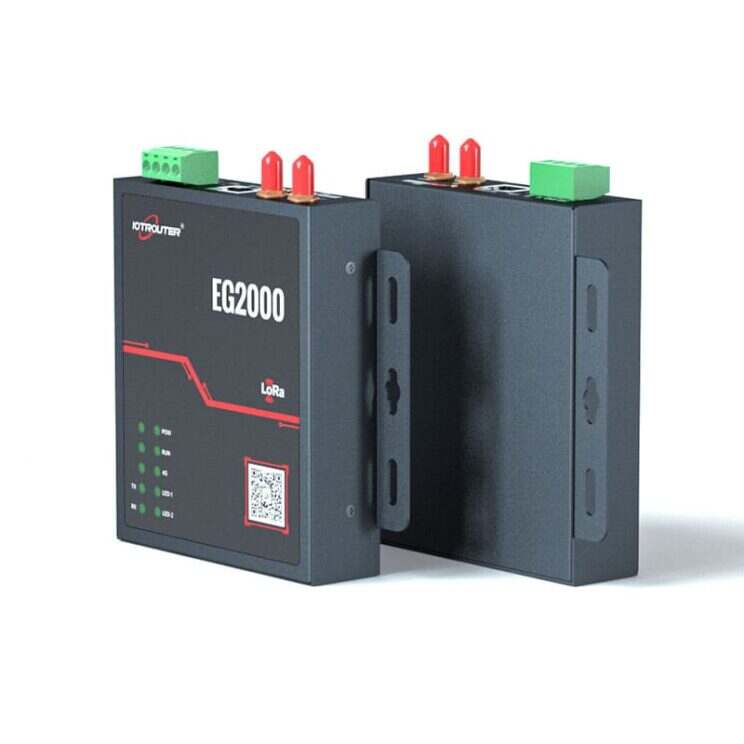Wireless routers are essential devices in the network era. What’s the difference between industrial-grade wireless routers and home routers? This article will reveal the differences.
An industrial-grade wireless router isn’t just a waterproof version of your home router transplanted into a workshop. It prioritizes reliability, environmental adaptability, long-term maintenance, and security: wide temperature range, vibration resistance, dust and moisture protection, redundant links (wired + 4G/5G backup), industrial-grade interfaces, and more granular management policies. In other words, it’s built for the field, not for your living room Wi-Fi.
1. What’s the difference between industrial-grade wireless routers and home routers?
| Feature | Home Router | Industrial Router (ER5000) |
|---|---|---|
| Temperatura de funcionamiento | 0–40°C | -40–80°C |
| Housing | Plastic, indoor use | Galvanized steel, passive cooling |
| Estándar inalámbrico | Wi-Fi 5 (802.11ac) | Wi-Fi 6 (802.11ax) + 5G NR |
| Redundancy | Not supported | Dual-link redundancy, load balancing |
| Interfaces | 1×WAN, 4×LAN | 1×WAN, 5×LAN, RS485, DI/DO, SIM slot |
| Security Features | WPA2, basic firewall | VPN, ACL, NAT rules, certificate auth |
| Deployment | Home/office networking | Industrial automation, edge computing |
Key takeaway: Industrial routers are designed for extreme reliability, harsh environmental conditions, and advanced networking policies, making them the backbone of industrial IoT.
2. What can industrial-grade wireless routers do?
Here are practical use cases you’ll encounter:
Remote device access and management: Remote pump stations, substations, and distributed server rooms transmit data via 4G/5G or satellite for remote maintenance by engineers.
Industrial wireless coverage: Replaces cumbersome cabling to provide reliable connectivity for mobile AGVs, mobile inspection terminals, and temporary workstations.
Multi-link redundancy and intelligent routing: Critical control flows use dedicated lines while surveillance video relies on cellular backup, enabling flexible traffic distribution;
Edge computing and protocol gateway: Perform protocol conversion (Modbus/OPC UA) on the router, enabling local caching and preliminary processing to ensure critical logic persists even during network outages;
Security boundaries and isolation: Implement VLANs, VPNs, and access controls to establish secure isolation zones between OT and IT.



3.Key Selection Criteria
Industrial Adaptability: Verify operating temperature, vibration resistance, and IP rating meet site requirements;
Network & Interfaces: Supported SIM slots, 5G compatibility, serial/Ethernet port count, and PoE requirements;
Operational Capabilities: Remote upgrades, configuration templates, bulk device management—calculate TCO accurately;
Security Features: VPN, device certificates, log auditing, access control, and firmware signing;
Ecosystem & Protocol Support: Compatibility with required field protocols and development interfaces.
4.Recommendations & Implementation Guidance
IOTRouter offers a series of industrial routers and edge gateways (e.g., Router industrial ER5000 5G+WiFi6) for reference selection.
Deployment Recommendations:
– Pilot critical locations first to validate link switching and edge policies.
– Plan remote operations, alerts, and firmware management workflows upfront—don’t wait for issues to implement rollback mechanisms.
– Crucially—never expose management ports directly to the public internet. VPN + certificates is the only secure approach.
5. ER5000: Next-Generation 5G Wi-Fi 6 Industrial Router
En ER5000 5G Wi-Fi 6 Industrial Router is designed for industrial IoT applications that demand ultra-reliable wireless connectivity, advanced security, and long-term stability.
Product Highlights
-
5G + Wi-Fi 6: 5G NR with download speeds up to 2.2 Gbps; Wi-Fi 6 with dual-band 2.4 GHz/5 GHz, up to 3000 Mbps.
-
Full Gigabit Network Ports: 1×WAN, 5×LAN for flexible topology.
-
Industrial Interfaces: RS485, DI/DO ports, SIM slot, modular antenna system.
-
Robust Protection: EMC compliance, anti-surge, anti-static, moisture and dust resistance.
-
Security: OpenVPN, NAT, ACLs, certificate-based access, port forwarding.
-
Deployment-Ready: Wall-mount, passive cooling, galvanized steel chassis, 24/7 operation in -40°C to +80°C environments.
6. ER5000 Technical Specifications
| Category | Especificación |
|---|---|
| Communication | 5G NR: n1/n28/n41/n77/n78/n79; LTE: B1/B2/B3/B5/B7/B8/B20/B28/B34/B38/B39/B40/B41; WCDMA: B1/B2/B5/B8 |
| Data Rate | 5G DL: 2.2 Gbps, UL: 1 Gbps; Wi-Fi 6 up to 3000 Mbps |
| Network Ports | WAN: 1×Gigabit; LAN: 5×Gigabit |
| Serial Interfaces | RS485: 1 port; configurable baud rates (2400–115200 bps); surge protection |
| DI/DO Ports | 1×DI (optocoupler isolation); 1×DO (250V 5A AC, 30V 5A DC) |
| Antenna System | 4×5G antennas; 6×Wi-Fi antennas |
| Potencia | 9–36V DC input, 12V/2A adapter, 500mA@12V operating current |
| Medio ambiente | Operating: -40°C to +80°C; Humidity: 5%–95% non-condensing |
| Certifications | CE |
| Chassis | 200×122×47 mm, galvanized steel sheet, wall-mountable/flat, passive cooling |
Conclusión
Understanding the difference between industrial-grade wireless routers and home routers is essential for making the right choice. True usability lies not only in feature richness but also in “long-term reliable operation.” The value of industrial-grade wireless routers isn’t measured by how many devices they can connect, but by their ability to operate continuously, controllably, and maintainably in harsh environments.
Only by carefully selecting equipment during deployment and integrating operational maintenance with security design can wireless access truly empower on-site productivity. As an official hardware partner of ThingsBoard y EMQ, IOTRouter delivers mature router solutions for industrial IoT. For on-site evaluations or product matching recommendations, feel free to contact the IOTRouter technical team anytime.


